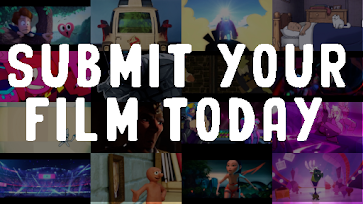Watership Down: Perspectives On and Beyond Animated Violence [Book Review]
Ask someone what movie or TV show most traumatised them as a child and one name comes up time and time again. Watership Down the 1978 feature adaptation of the novel by Richard Adams- not to be confused with the 90's TV series or the 2018 BBC/Netflix miniseries- has scarred generations of children. The film has a (deserved) reputation for subjecting cartoon bunnies to horrible fates and in the process subverting expectations for children's films and what an animated film could be. Given its significance in the history of British animation, it's a surprise that it's taken this long for someone to write a book about it.
Watership Down: Perspectives On and Beyond Animated Violence was published in hardback by Bloomsbury Academic. A paperback edition will be released this August. The book takes the format of a collection of essays on Watership Down, edited by Dr Catherine Lester, a lecturer in TV and Film at the University Of Birmingham. It is part of the Animation: Key Films/Filmmakers series, under the supervision of Beyond Bagpuss author Chris Pallant,
The title of this collection would seem to suggest the book has a particular focus. "On and beyond animated violence" suggests that it would focus on the film's violent content, or at least use that as a jumping off point. But the reality is that this book is much more varied and nuanced than that, and that is only part of the story.
Following an introduction "Watership Down in context" from Catherine Lester, the book is split into four themed sections. Part one "Bringing the Warren to life" features stories from the film's production. It talks about the complexities of film financing as well as the creative side. It was a troubled production that saw respected animator John Hubley fired as director, for the film's producer Martin Rosen to take over as writer/director.
The second chapter "Revisiting The Production of Watership Down Through The Arthur Humberstone Animation Archive" looks at the production by examining archive materials of the late British animator Humberstone who made a significant contribution to the film.The third chapter "Unearthing A Lapine Corpus" looks at the film's fictional rabbit language, culture and mythology.
Part two is titled "Animal Stories". Chapter three "Animating Utopia: Aesthetic instability and the revolutionary gaze in the film adaptation of Watership Down" explores the film's themes and allegorical readings of the text. Chapter five "Human-animal conflict in 1970's Childrens's cinema" compares the films to live-action animal films released around the same time. Ring of Bright Water, Tarka The Otter and The Belstone Fox are, like Rosen's film, known for traumatising their young audience. Apparently in 70's Britain that was just what you did. Chapter six "Eco-doom and ecopedagogy in Watership Down and The Animals Of Farthing Wood" compares Watership Down and its 2018 Netflix remake and the 90s animated series The Animals of Farthing Wood. To give you an idea of the content of the latter, simply google "Animals Of Farthing Wood deaths." The 70s didn't have a monopoly on traumatising children.
Chapter seven "When rabbits came to Australia" looks at how the film was received down under, where rabbits are considered an invasive species.
Part Three "Aesthetics of sound and image" opens with "English pastoral melodies: The Traditions and Connotations of Angela Morley's Musical score for Watership Down" takes an in depth look at the film's music. "Watership Down, music and/as horror" puts forward the idea that Watership Down can be seen as a horror film and that music plays a significant part in that. Chapter ten meanwhile- "Colour, aesthetics and Watership Down" analyses the film's visuals.
The eleventh chapter "Shifting art styles and the depiction of violence in Watership Down" also looks at the film's visuals, with an emphasis on the violent scenes.
The final part "Affective and Ethical Encounters with the rabbit" begins with "Drawing Blood: The Forms and Ethics of animated violence in Watership Down", also examining the film's violence. Chapter thirteen "Watership Down, rabbit horror and suitability for Children", written by editor Lester, looks again at whether the film can be considered horror and debates its suitability for young viewers. The Fourteenth and final chapter "Mourning Hazel-Rah" looks at the film's theme of animal death and how the audience relates to it.
The book offers the most in-depth examination of the film you're likely to find and examines it from many different angles. It's definitely not just about violence, or the film's controversial nature and nor is it simply a "making-of". But both of those things are part of the book- with much more besides.
There are illustrations throughout, but they are in black and white- which is a shame, especially considering that as an academic book, it is extremely pricey. An e-book version is available from Bloomsbury Collections as a free download.
The book is decidedly academic in tone (most of the contributors are lecturers or professors) and is a very dry read. This would appeal to students of animation or film and academics or major Watership Down enthusiasts. For the more casual fan, looking for a lighter read, factor in that sky-high price tag (£90 for the hardback, £28 for the paperback) you'll be better off looking elsewhere.
★★★☆☆

























